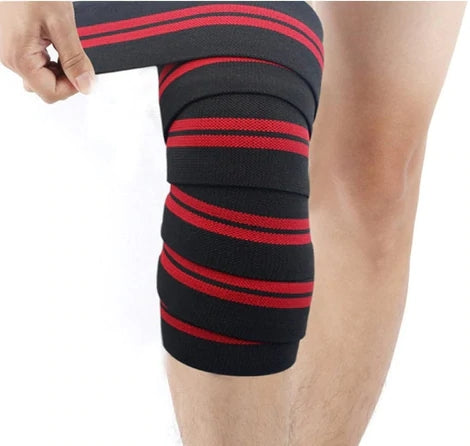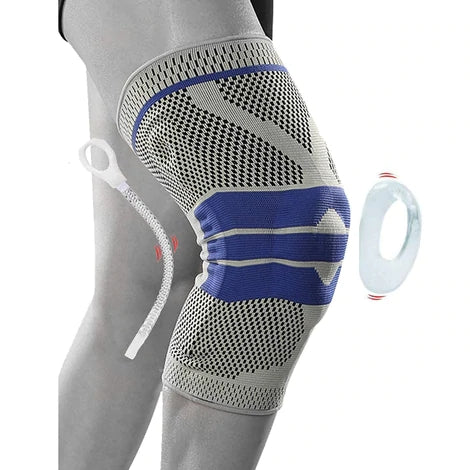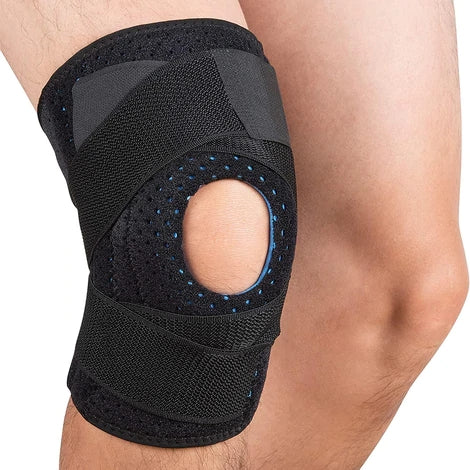
How to choose knee pads scientifically
Share
After running for a long time, I feel a little discomfort in my knees. My parents are getting older and often complain about knee pain. Should I buy a knee pad for maintenance?
So I opened the online shopping page and saw a bunch of choices of various shapes. After a long period of confusion, the matter of buying knee pads was so impossible that it was shelved.
Presumably most of you have had a similar experience.
This article will share with you some methods on how to choose knee pads
Different knee braces have different functions
There are currently four main types of knee braces on the market: knee wraps (for post-injury protection), knee braces (for preventing knee injuries and joint wear), functional knee pads (for post-injury protection), and Post-operative or rehabilitation-specific knee braces (mainly held in place by stronger braces).
Before choosing a knee brace, it is recommended that a doctor or physical therapist first conduct a systematic evaluation of the knee injury and function.
When arthritis causes pain on the inside and front of the knee joint, in order to avoid the pain area, the wrong standing and walking posture will squeeze the ligaments and articular cartilage inside the knee joint together, causing more wear and tear. At this time, only tension is needed. The lower knee pad can reduce the risk of wear and tear from the source. By slightly strengthening the lateral tension of the knee joint, the ligament and cartilage inflammation area on the front of the knee joint can be fully opened. When the inflammation that causes pain is fully metabolized, there will be no more mistakes if you don’t feel pain. 's power pose.
Where are the knee pads protected?
When the patella ligament is injured, the patellar retinaculum is the best choice. It can fix the patella in the correct position through tension and reduce the excessive force of the quadriceps caused by the derailment of the patella. Occurrence of "legs".
The choice of a suitable knee pad is inseparable from an accurate grasp of the knee joint problem, so before choosing a knee pad, you may wish to go to the hospital for a system evaluation.
"Hard knee pads" that focus on protection
The characteristic of the hard knee pad is the protective layer made of hard material in front, which can protect the impact on the front of the knee joint, and further absorb the impact through the buffer layer of the next layer. The material between the good hard shell and the patella of the knee joint is There is some flexibility.

Most of the hard knee pads are fixed with straps, which can be adjusted according to the size and exercise habits of the person in use. The improper design of the simple straps is easy to run to the middle of the knee during the activity, and the position needs to be adjusted. Most of the elastic layers under the hard knee pads are made of compressed foam, which can withstand a lot of pressure but feel hard, so the comfort is not enough. If there is an elastic buffer layer under the hard knee pad buffer layer, the comfort will be improved.
This type of hard knee pads is mainly used for the period just after knee surgery to resume sports. At this time, the strength of the knee joint after surgery is not enough, and hard knee pads are required for all-round protection. In addition, such knee pads are often used in strenuous sports such as skiing and skating, which have a large impact on the knee joint.
Lightweight and firm "soft knee pads"
The characteristics of soft knee pads are light, breathable, and easy to wear. Most of them are sleeve type, the material is very soft, and the protective position is fully covered.

Thin soft knee pads basically do not have much protective ability, so soft knee pads should choose thicker knee pads to play a certain protective role. Try to choose soft knee pads with sleeves and straps of the right size. If the size is not selected properly, too tight will affect the local blood flow of the knee joint, and too loose will affect the protective function.
This type of soft knee brace reduces knee pain and swelling through a certain amount of compression. At the same time, most soft knee braces have an opening design on the front side, which can stabilize the patella and avoid the wear and pain caused by excessive movement of the patella. The material is elastic and has a good fit, suitable for wearing when exercising. At the same time, the slight compressive force of the knee brace also helps blood flow, which is a good choice for patients with chronic knee degenerative diseases and long-term runners.
Simple and refreshing "patella belt"
The patellar retinaculum is simple in shape and is generally tied at the position below the patella of the knee joint. This part is anatomically called the "patella ligament". A protective support tape is reinforced on this ligament to help disperse some accumulated in the movement during exercise. Excessive load on the patellar ligament prevents further damage to the patellar ligament, causing the problem of patellar tendinitis.

Aiming at the situation that the patellar ligament on the front of the knee joint is prone to pain after long-distance running, the main rehabilitation idea at present is to reduce the excessive stretch of the patellar ligament during running. Wearing the patellar ligament during running is a very simple way to fix the patellar ligament and disperse the pressure on the patellar ligament. , to reduce the protective method of excessive traction. For friends who like long-distance running, if you think knee pads are troublesome, it is strongly recommended to wear patella support belts to protect your knees.
If the pain mainly occurs on the outside of the knee joint, the thickest part of the retinaculum can be attached to the lateral collateral ligament, which can also play a corresponding role in cushioning support.
When choosing knee pads, in fact, everything is the same. According to actual needs, comprehensive consideration should be given to the type, material, support position and elastic strength of knee pads.
Most knee pads used for knee tendonitis and soreness caused by patellar ligament edema are generally made of soft and durable nylon fabric. They have just the right amount of tension to keep the patella ligaments and quadriceps tendon in place, and because the material is soft, these knee braces have less support, so they don't create a "stress shield" (external support makes the internal support structure of the body too dependent degeneration occurs). Wearing these knee pads with less support, tendons and ligaments will be in the correct position and perform their mechanical functions without shrinking and degenerating.
Other, more complex types of knee braces combine metal, stretch nylon fabrics and plastics to form some more maneuverable nylon shrink support systems to provide adequate support and wrapping in specific locations.
In addition, there are now very popular colorful muscle effect stickers. On the field, more and more athletes have put on this new type of "plaster". Physical therapists combine anatomy and kinematics, according to different positions and different needs. , a customized temporary "protective gear" is posted. Since the viscosity and tension last up to a day, this treatment is not a long-term solution.
Although this kind of muscle effect sticker looks very easy, in fact, the knowledge is quite deep. It is not recommended to buy the sticker by yourself. It requires a professional certified physical therapist to accurately stick it after the functional evaluation.
Hope this article is helpful to you.










